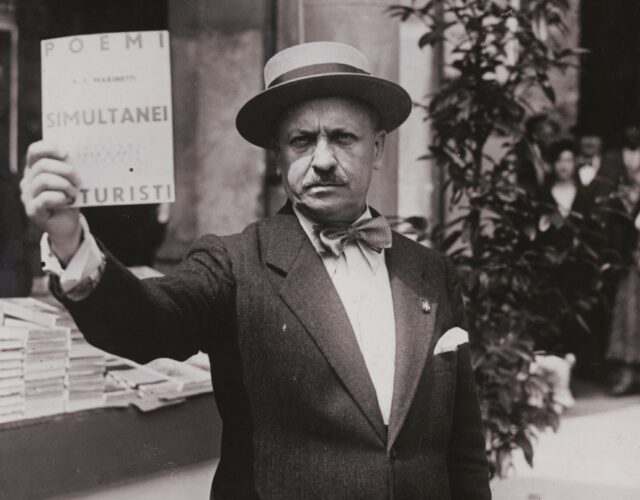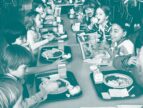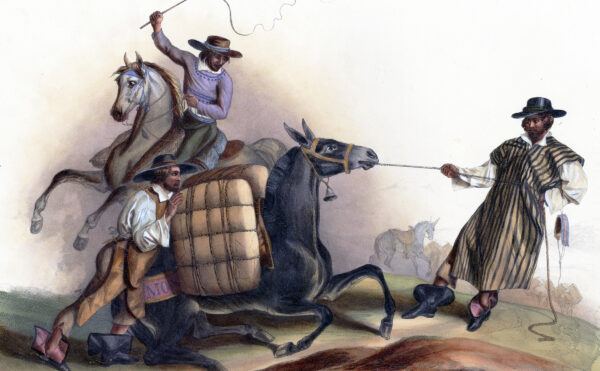A few days after Christmas 1930, a poet and provocateur declared war on an Italian icon. This wasn’t the first time Filippo Marinetti had turned his back on Italian traditions, nor was it the first time he’d called for war. As the founder of the artistic and political movement futurismo, Marinetti was an enemy of the past. The past was something to be scrubbed away by war, which he considered “the world’s only hygiene.” Marinetti was willing to go to disturbing lengths to achieve his futurist utopia. “We will destroy the museums, libraries, academies of every kind,” he wrote. But now he had chosen a more modest foe: spaghetti.
Marinetti laid out his allegiances in a Turin newspaper under the title “Manifesto of Futurist Cooking,” which included sample dishes and a list of 11 key points. “People think, dress, and act in accordance with what they drink and eat,” Marinetti told readers. Gnocchi, macaroni, spaghetti, and other traditional foods were to blame for pessimism, laziness, and other vices. Only with a new and dynamic approach to food—one that drew liberally on recent advances in chemistry—could Italy advance boldly into the future.
Two Italian researchers, Roberto Ibba and Domenico Sanna, recently examined the futurist’s unexpected obsession with food in the Journal of Interdisciplinary History of Ideas. As it turns out, Ibba and Sanna are themselves an unlikely combination: while Ibba is a postdoc in modern history, Sanna manages a well-known restaurant in Sardinia. “There is not a lot of history [written] on futurism and food in Italy,” says Ibba. “All this stuff has been hidden over the years.” A couple of years ago the pair began working together to change that.
Even before World War I, futurists had taken an interest in food. In Paris, Marinetti met a chef named Jules Maincave, who wanted to replace traditional pairings, such as oil and vinegar, with more radical pairings, such as banana and cheese or even herring and strawberry. Maincave inspired Marinetti to create a futurist meal in the Italian city of Trieste. Marinetti literally turned the menu upside down. Dinner began with coffee and “fruit of the future.” After the main dish diners tried such appetizers as “archaeological salad,” “fish of the Dead Sea,” and “goulash with explosive peas in historic sauce.”
But when war broke out in Europe in 1914, the futurists felt they had bigger fish to fry. Marinetti volunteered with a unit of armed mountain cyclists. After the war, in 1918, he helped found the Futurist Political Party. The next year he coauthored the Fascist Manifesto, and his political party was absorbed into Benito Mussolini’s Fascist party.
Marinetti supported Fascism to the extent that it too advocated progress, but his allegiance eventually wavered. To Marinetti, Roman ruins and Renaissance paintings were not only boring but also antithetical to progress. To Mussolini, by contrast, they were politically useful. The dictator drew on Italian history in his quest to build a new, powerful nation—which also led to a national campaign in food self-sufficiency, encouraging the growing and consumption of such traditional foods as wheat, rice, and grapes. The government even funded research into the nutritional benefits of wheat, with one scientist claiming whole-wheat bread boosted fertility. In short, the prewar dream of futurist food was tabled yet again.
Not until a decade later did Marinetti return to the subject of food—and by 1930 chemistry was a pillar of his strange new cuisine. His manifesto devoted one of four chapters to the subject and called for the creation of tasty “plastic complexes” that would replace traditional foods. Like many prognosticators of the early 20th century, including chemist Marcellin Berthelot and the science-fiction writer H. G. Wells, Marinetti expected synthetic foods to redefine nutrition.
To futurists, technological progress was an antidote to tradition, and so a “battery of scientific instruments” was to be used in the kitchen. These included “ozonizers to give liquids and foods the perfume of ozone,” “centrifugal autoclaves” (at the time used to make margarine), and “colloidal mills to pulverize flours, dried fruits, drugs, etc.”
Certain portions of Marinetti’s manifesto seem sensible enough. Steam cooking should be avoided to prevent the “destruction of active substances (vitamins, etc.) because of the high temperatures.” (While it’s not clear that heat destroys most vitamins, it’s true that cooking reduces the nutrients in some types of vegetables.) Even Marinetti’s description of the chemical constituents of food seems like a rough approx-imation of the information seen on today’s nutritional facts labels. “Chemical indicators will . . . serve to correct possible errors: too little salt, too much vinegar, too much pepper or too much sugar.” A generous reader might see the manifesto as a sort of spiritual precursor to the food pyramid.
But like much of the art that futurism made famous, Marinetti’s proposal was, all in all, a bizarre jumble. Despite the manifesto’s claim to be scientific, Marinetti advocated technological cooking simply out of an ideological commitment to newness—and the creative use of scientific terminology is, of course, not science. The manifesto certainly didn’t cite studies that identified certain foods as healthier or tastier. Perhaps it’s no surprise that the future we live in doesn’t look much like the future Marinetti proposed.
Still, that doesn’t mean that Marinetti’s influence has gone away. Sanna, the researcher and restaurant manager, says his own restaurant is partly inspired by futurist experiments. “What we do is reverse the traditional plate,” he says. For example, in place of traditional fresh pasta served with sausage ragù, he might serve the ragù, or sauce, inside the pasta. According to Ibba, it’s a good time to reexamine the history of futurism. With the current success of TV cooking shows, gourmet cookbooks, and so-called molecular gastronomy, he says there is more interest in food in general. A century has passed since futurism was founded, which means a greater distance from politically charged topics—like the movement’s association with Fascism. “Maybe it’s the right time now.”
Art lovers, even outside of Italy, seem to agree. One evening in July 2014, 60 diners showed up at the Guggenheim Museum in New York City, ready to taste the food of the future. They were soon told to put on a pair of pajamas covered in various materials: sponge, sandpaper, steel wool. Each guest was led into a dark room and told to choose his or her dinner companions based on feel. After an atonal piano performance, a salad was served, to be eaten without silverware; sprays of perfume in the air around the diners added an unfamiliar twist to the flavors of the food.
This strange spectacle was a revival of Marinetti’s meal from a century before. In his 1930 manifesto, alongside his enthusiasm for chemistry, Marinetti had also proposed “the use of poetry and music as ingredients,” as well as the abolition of silverware. Italian chef Mimmetta Lo Monte adapted these ideas to serve an edible complement to the Guggenheim’s exhibition Italian Futurism, 1909–1944: Reconstructing the Universe. The meal was called ANTI-PASTA.
Marinetti might be happy that his ideas—and his meals—still have some currency today. But there is a tasty irony to the revival of futurism. Marinetti once wrote that “museums are the graveyards of art.” In his view the past is a burden that teaches us nothing, and looking back only distracts us from looking forward. These days, as historians and chefs alike look back at Marinetti, it’s clear that his vision for the future of food—while once bewilderingly modern—has become a part of the past.






